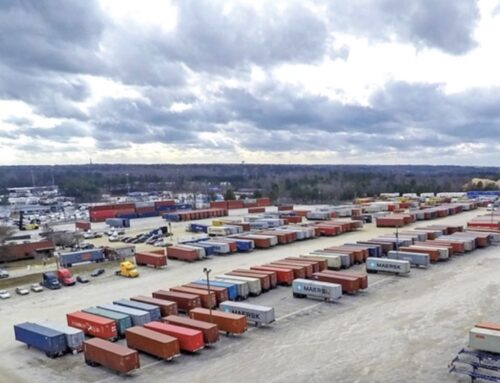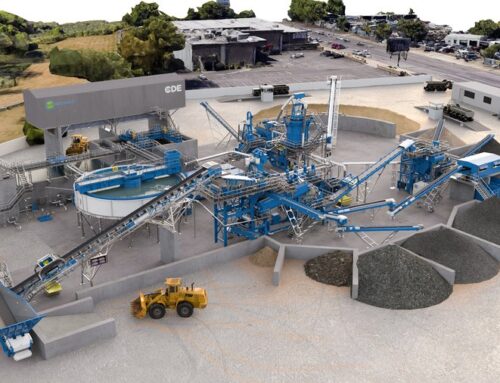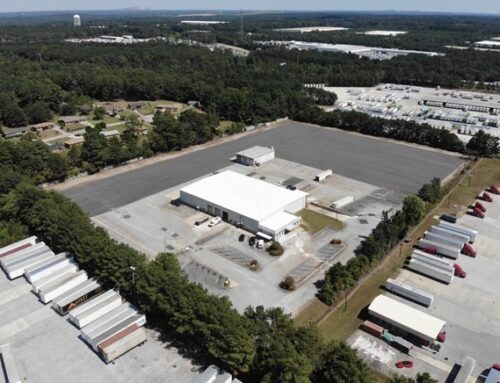Roofs Going Green
by Erin Arvedlund, Inquirer Staff Writer
Wishing you had a little patch of greenery atop your building, while also feeling good about helping the environment?
At 1148 Wharton St., a South Philadelphia school-turned-apartment building offers renters a trendy amenity in urban real estate: the green roof.
The Wharton Street Lofts is a residential building that converted what was once a public, then a parochial, school into 45 apartments with 38 parking spots. For urban dwellers who want an environmentally friendly living space, the project offers a green roof deck open to all residents, because the developer was awarded a storm water management grant from a Philadelphia city agency.
A green roof is more than just grass on top of a building. It is a rainwater capture and management system. “This should be viewed as a model of how to take a large building in a residential neighborhood, work with the neighbors to get a zoning variance, and then successfully redevelop it,” says Leo Addimando, managing partner with Alterra Property Group of Philadelphia.
Addimando and his partners bought the closed Annunciation School at 12th and Wharton Streets for $3 million. Ultimately, the total cost to renovate the building was $9.9 million, he said.
As an added selling point, Wharton Street Lofts received a grant from the Philadelphia Water Department and the Philadelphia Industrial Development Corporation to promote green storm water management practices. The Stormwater Management Incentives Program was the city’s idea to transform large, impervious properties that generate high volumes of storm water runoff and burden the sewer system and waterways into buildings that instead help mitigate storm water. Ways to do that include rain gardens, vegetated infiltration basins, porous asphalt, and a green roof.
“The green roof also creates a natural insulant,” Addimando says.
Wharton Street Lofts installed what is known in the industry as a semi-intensive green roof, a rain garden in the parking lot, two subsurface infiltration beds, additional landscaped areas, planted street trees and an integrated rainwater capture and reuse system. In addition to the storm water management benefits, the city wants projects such as this as examples of how adding sustainable features may also increase green development in asphalt-heavy neighborhoods such as Passyunk Square. The Water Department’s Green City Clean Waters Plan includes an ambitious goal to convert 9,500 impervious acres to “green acres” that capture and manage the first one inch of storm water runoff.
Addimando wanted to maintain the historic feel of the turn-of-the-century structure at 1148 Wharton, by keeping the school’s old floor-to-ceiling chalkboard room dividers, transom windows, stair tiles, wooden banisters and eight-foot-high glass windows in some apartments. The 2-foot thick outer walls “also help regulate the heat and temperature in the building.”
And yet there is a distinctly modern feel with new appliances, elevators, and its location next to the fire, police and municipal buildings and Columbus Square Park.
Addimando’s group is also developing smaller-footprint apartments in Philadelphia, including the Avenir, which he says offers some of the city’s first “micro-apartments” at 1515 Chestnut St.
Studios will run roughly 300 square feet in the high-rise building, but offer amenities such as a doorman and fitness club.
Alterra Property Group and the Scully Co. are redeveloping the Avenir into 180 apartments for $60 million, slated for completion by the second quarter of 2015. The project redevelops 150,000 square feet of Class B office space into apartments, offices, and 7,500 square feet of existing ground-floor retail. Wells Fargo is taking the main corner, while Wendy’s and Dunkin’ Donuts will remain as tenants.
earvedlund@phillynews.com
215-854-2808
@erinarvedlund





